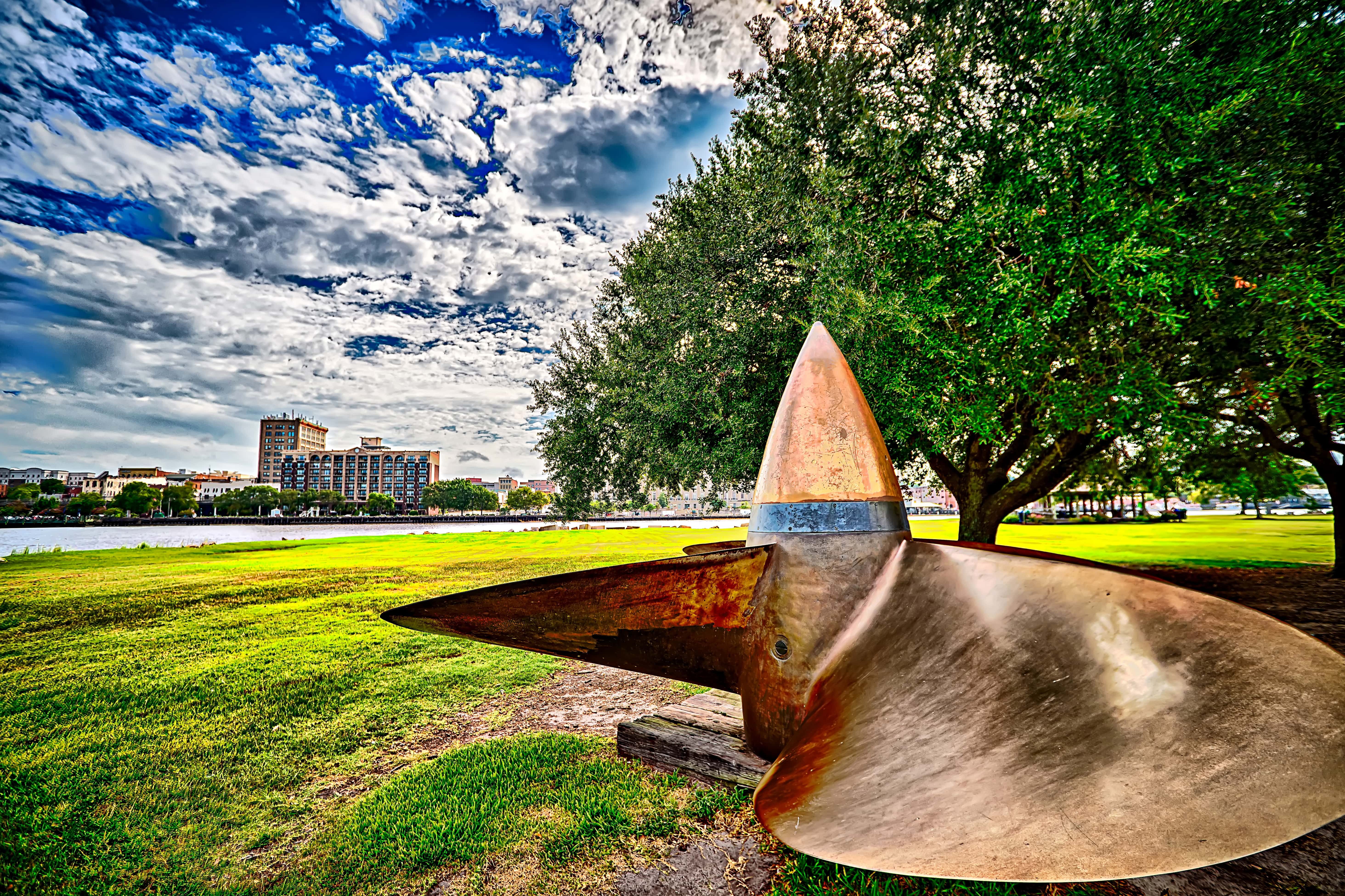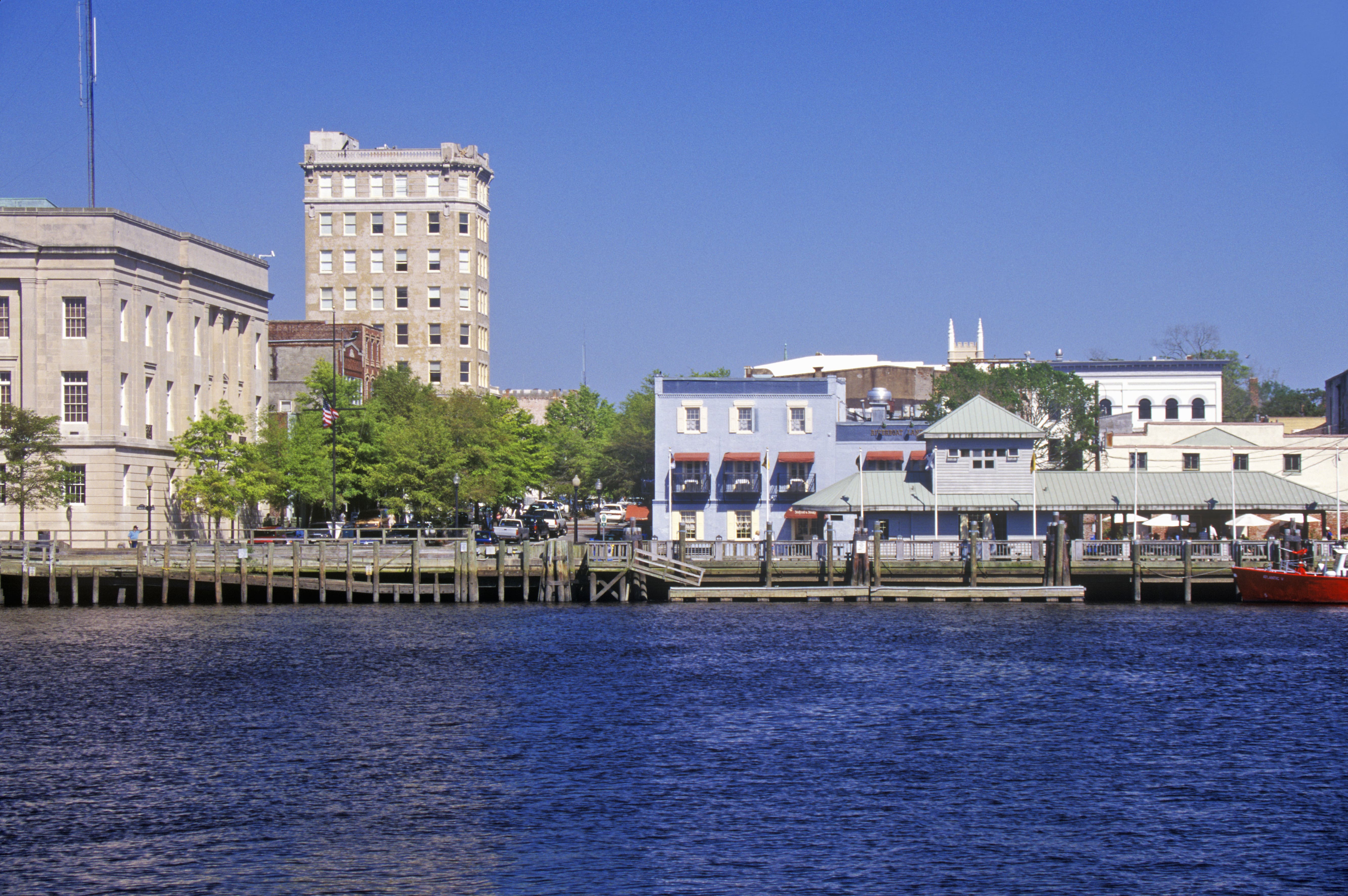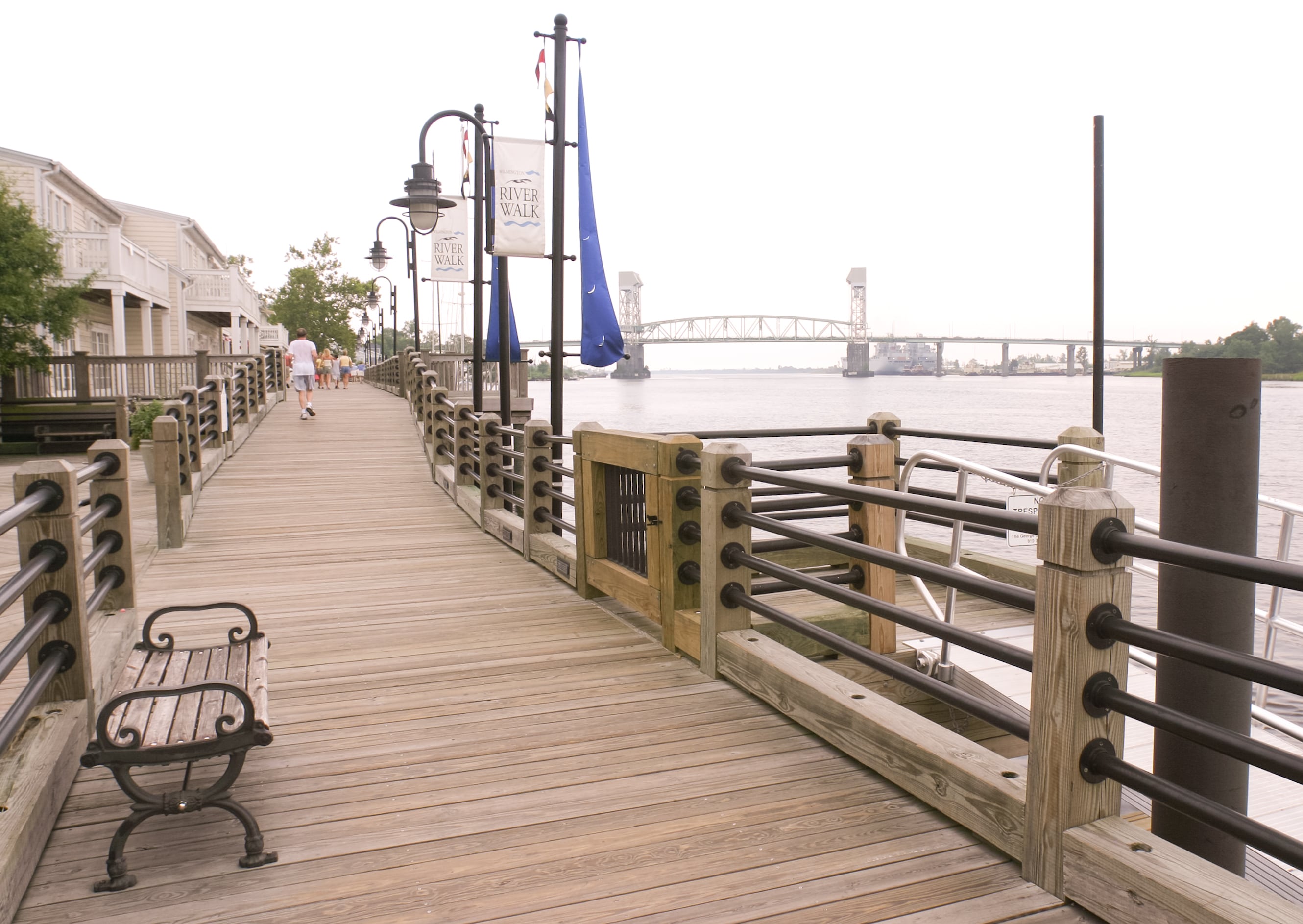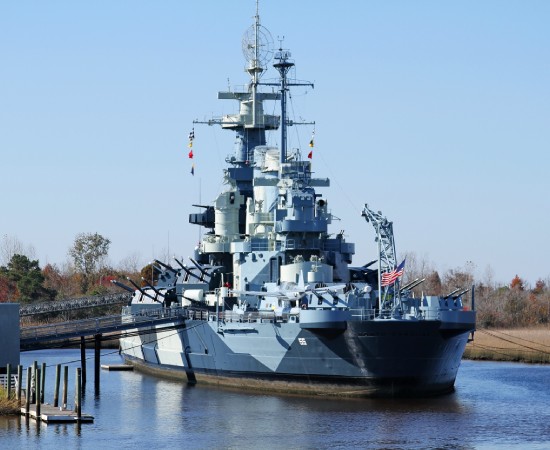
Why is “WB” among the best beaches in the Carolinas? Let us count the ways. We’ll begin with the shoreline: ivory sands and endless blue waves that beg you to bask in the sun, search for shells, or go surfing. (Ask the concierge about private surf lessons.) Beyond the shoreline itself, discover restaurants, coffee shops, bars, ice cream parlors, and surf shops. Take a stroll along Johnnie Mercers Fishing Pier, stretching over 1,200 feet into the Atlantic Ocean — an excellent vantage point for watching surfers work the waves. Wrightsville Beach is an island, and on the backside, you’ll find the Intracoastal Waterway, where calmer waters are ideal for kayaking, boating, sailing, or stand-up paddleboarding. WB also has its park with modern playground equipment, wide-open grassy areas, and a weekly seasonal farmers market.
Wilmington, aka the Port City, was founded in 1739 along the Cape Fear River. As you stroll along the nearly two-mile Riverwalk, saunter into boutiques, galleries, outdoor cafes, and more. Take in gorgeous sunsets over the river with the iconic World War II Battleship North Carolina in the background. Catch the Saturday Farmers Market April through November, featuring locally grown veggies, plants, pastries, arts, crafts, and more. The north end of the district features a marina, grill, and the Live Oak Bank Pavilion amphitheater. Every spring, the North Carolina Azalea Festival is held throughout the city with an art fair in Downtown Wilmington, while Riverfest takes place the first full weekend of October.


Venture a few blocks east of the Cape Fear River to see some of Wilmington’s most picturesque residences — many built before the Revolutionary War through the Civil War. Explore over 230 blocks on foot, e-bikes, or horse-drawn carriage. Houses are marked with color-coded plaques to indicate whether they are 75+, 100+, 150+, or 200+ years old. Two of our favorites include the Victorian-era Bellamy Mansion, built just before the Civil War; and the Burgwin-Wright House and Gardens, Wilmington’s only structure from the Colonial Era that is open to the public.
Just 1.5 miles south of Downtown Wilmington is an enclave of old buildings and warehouses that have been reimagined into restaurants, wine bars and lounges. Satellite Bar & Lounge is the anchor of this laid-back district, serving beer, wine, and cocktails — plus live bluegrass jam sessions, corn hole games, and dog-friendly vibes inside and out. If you’re a fan of the PBS series “A Chef’s Life,” don’t miss the chance to dine at celebrity chef Vivian Howard’s Benny’s Big Time Pizzeria.


A few blocks northwest of the Downtown Riverfront, the Brooklyn Arts District comprises former office, industrial, and church buildings. Today these structures house the likes of Edward Teach Brewing (a nod to the infamous pirate Blackbeard’s real name); Brooklyn Arts Center, an event venue where you can catch concerts and art shows; plus various restaurants, bars, and the locally loved Boombalatti’s, possibly the freshest, tastiest ice cream you will ever eat.
This trio of artistic districts adds up to an eclectic array of new, creative businesses set in unique backgrounds, all near Downtown and within minutes of each other. Visit all three if you can!


Can a ship be a National Historic Landmark? Battleship North Carolina earned this distinction for its participation in every major naval offensive in the Pacific theater during WWII. Explore nine levels of nautical majesty, including where the crew ate, slept, and worked. From the deck, you can see straight into the heart of Downtown Wilmington.
Eels and otters and sharks, oh my. The lovely, thoughtful North Carolina Aquarium at Fort Fisher features a 235,000-gallon tank with a “viewing bubble” that lets you experience a unique perspective of the sharks, stingrays, and more on the other side of the glass. Kids love “petting” the sea stars, anemones, and stingrays in the Coquina Outcrop habitat. There’s even an albino alligator to marvel at. Worth the 20-mile drive from Wilmington.


One of 17 institutions of higher education in the University of North Carolina system, UNCW is the state’s only coastal university, placing its 18,000 students minutes from the beach. A beautiful campus with modified Georgian architecture, the school offers 60 majors across five colleges, including the Cameron School of Business, College of Health and Human Services, and the Watson College of Education. Visitors are welcome to stroll the school’s 10-acre preserve on multiple walking trails lined with cypress, pine, red maple, and sweetgum trees.